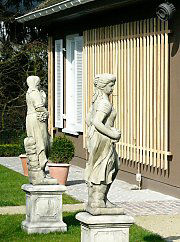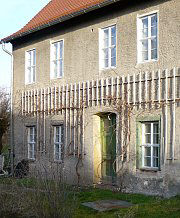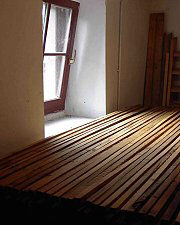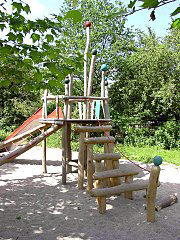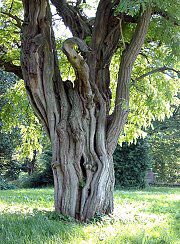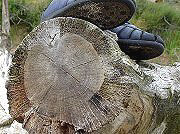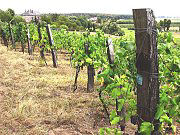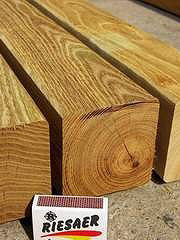Robinia Wood (Black Locust) for Trellises
Both with classic wooden trellises and special shapes, the question of the best wood will eventually come up. FassadenGrün recommends robinia wood (also known as 'black locust' wood in North America) for high-quality trellises with a very long life. Robinia wood is hard and extremely abrasian- and rot resistant-- the contact points of the laths will not rot or develop fungus. Please ask us for sources of supply! Alternatively, oak, chestnut, larch and ultimately all conifers (softwoods) can be used, but then with a coat of paint or impregnation. Robinia wood does not need paint, but can be coated with "Swedish red" or "Ovolin egg tempera," for example. Please also refer to our introductory overview on wooden trellises.
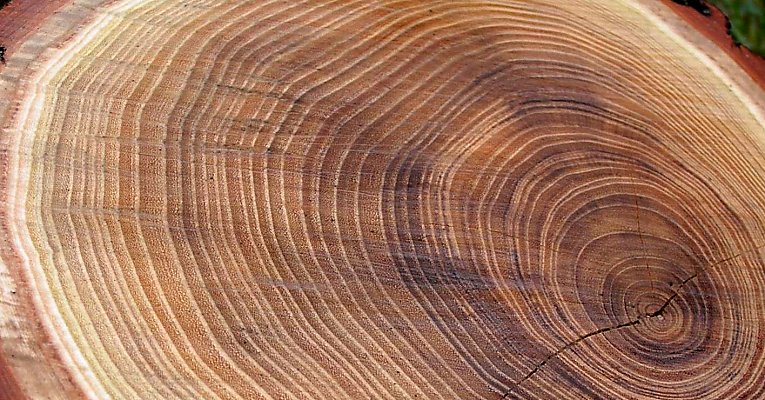
Robinia: an almost forgotten timber
Known for its high-quality, the wood of the robinia (Robinia pseudoacacia), also known as "False Acacia" ("acacia wood") and "Black Locust" was nevertheless avoided by carpenters. Due to its extreme hardness and toughness, it is difficult to work and tends to warp. So it was used only in mining, for example, to reinforce tunnels. After all, robinia wood is sturdier than oak! These days, robinia is often used as a teak wood substitute, mainly for garden furniture, playground equipment, and hydraulic engineering.
Natural Impregnation
Important to know: robinia (black locust) wood is poisonous, and the "robinetin," which acts as an impregnation and is safely encapsulated in the dry wood, can be released by machining (processing the wood) -- sawing, drilling, sanding -- and can lead to nausea, etc..The "sawing" of robinia is therefore done in a sawmill by wet cutting or with safe extraction. Laths for trellises should be sawed outdoors or in ventilated rooms.
Availability
In many areas robinia is only present at the edge of forests and road. If large quantities of logs are needed, it is worthwhile to ask the local forest administration. Avoid cutting the trunk, as there are enormous costs for this / this is very expensive (at least in Germany). Air-dried square woods for trellises, on the other hand, mostly come from Hungary, Serbia, Slovakia or the Ukraine, because there are plantations with straight trunks.
Application
Robinia's high resistance to plant and animal parasites pertains to the heartwood, which accounts for (only) about 70-80% of the trunk. Square profiles are made of straight grown plantation wood. The wood should be dried in the open air to avoid distortion; this way the laths therefrom can be fixed to the wall at only two points. At the same time, a very slight deformation gives the latticework a natural look and a certain rustic charm. Laths that are fastened at at least three points, and are thus forced to be kept straight, can also dry on the façade.
In the ground robinia wood can probably be used in larger cross sections (over 15 cm) as unpeeled or milled round logs even without prior drying. Halved or quartered round logs are sometiems used, e.g. for fencing, enclosures, etc.. The profiles must be thick enought to guarantee the stability of the posts over time. In viticulture this is for about 25 to 30 years; the entire construction with plant is then ploughed and renewed for the planting of new vines.
A Hardwood
When using robinia wood, please note: you cannot nail into this "rock hard" wood as usual. Each connection must be pre-drilled and screwed in. This also applies to FassadenGrün's tapping screws and staple nails.

